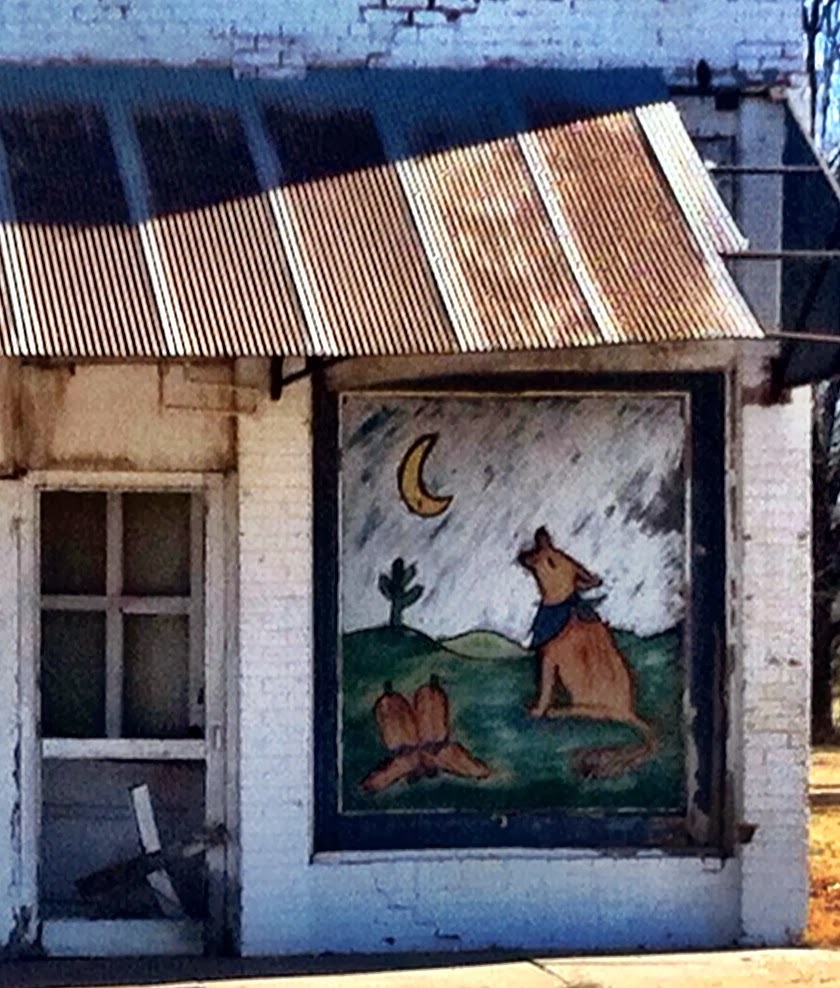Highway 60/64 west of Tonkawa may be red on our state map, but it is a blue collar highway these days, a testament to two Oklahomas--the urban affluent, and rural poverty. It is one of William Least Heat Moon's "blue highways" for me.
People who live in booming metro areas in medieval-thought gated communities or stuck like ants in rush hour traffic have no idea of the poverty in most of rural Oklahoma, and a trip down roads like this makes it clear.
 |
Veterans' Memorial at Lamont
water tower and grain elevator in distance |
I love roads like this, even though today there is increased oil-field truck traffic. There is some road construction on bridges, and wide open spaces, sparsely populated with cattle, old houses, vacant brick silos, barren fields and dwindling small towns, marked with water towers and grain elevators where railroads used to be.
First settled in the 1890s, and home to booming populations, the small towns every 10 miles are testaments to long gone prosperity and hope. Today, the highest paid people in town are probably school teachers--other than a few bank owners, probate lawyers, and retired large landowners. Everyone else is working in a garage, driving a truck, serving coffee at a cafe or cashiering at a convenience store, serving as a flagman on a road crew, all trying to make a living. You see this in the multitude of old frame houses and mobile homes, with a few brick homes interspersed.
 |
| There are two Oklahomas |
There's usually a bank and a post office. Source of pride in every town, the last thing really holding it together, is the school, even if it is consolidated with another town.
At Lamont, population 417, 12 miles east of I-35, there's not much, but the street to the school is clearly marked. The Eagles roost here, and there are signs pointing the way, and eagle tracks painted on the pavement.
Urban folks and politicos who want all these small schools consolidated have no idea of the distances involved and the communities sustained with local tax dollars. They speak out of two sides of their mouths, fleeing intercity schools, but that is a different journey and subject, except that it illustrates the divide between urban and rural in this state in more than just economics and politics.
 |
| A testament to lost hopes... |
Lamont, settled in 1893 was named for President Cleveland's secretary of war, Daniel Lamont. Today, there is a veterans memorial, with an aging armored military unit out front of the granite memorial, in the town park, with the slender water tower overhead. There are lots of boarded up buildings and houses, testaments to lost hopes and happy times. The most modern building in town is the Methodist church, a heritage of steadfast faith that continues from settlement to now.
I could have spent more time here taking photos, and wish I had. In fact, as I kept driving west, I saw multiple grain elevators off on side roads, beacons or tombstones to other small towns, beckoning for a trip and more photos, more stories of the good people of rural Oklahoma.
 |
| First Methodist Church, Lamont, a heritage of steadfast faith |
(Information on Lamont from Oklahoma Place Names, George Shirk)
- Next, Greasy Steve's, and Pond Creek.











